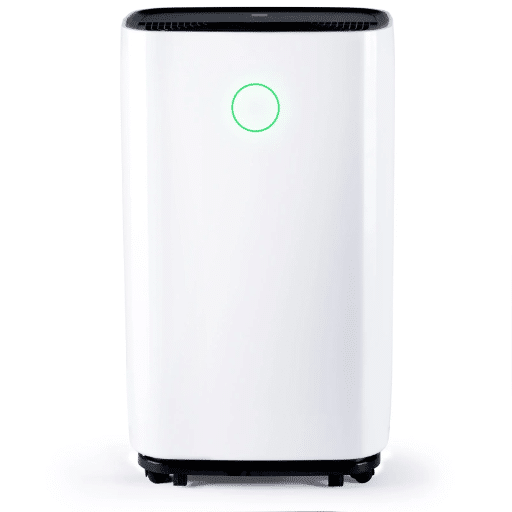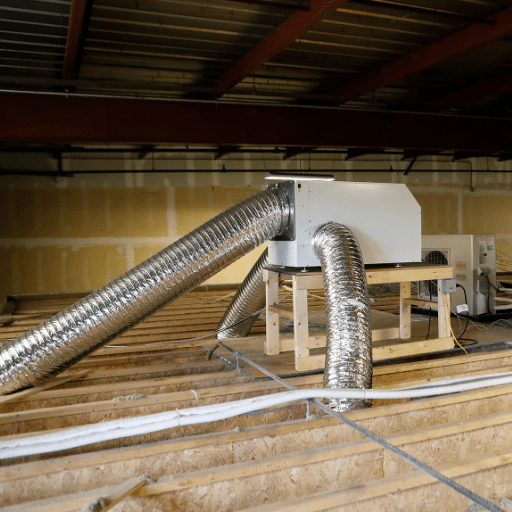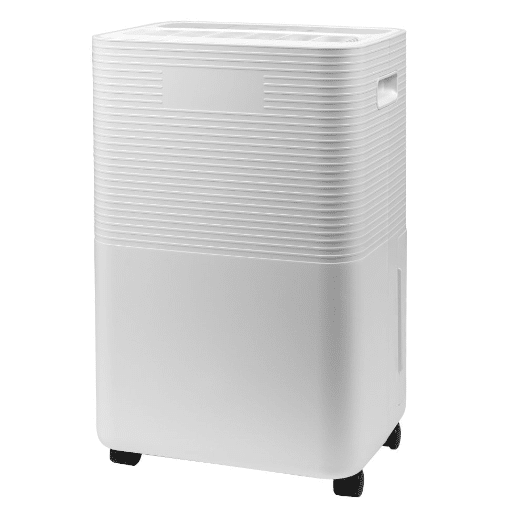Dehumidifiers are quite essential in keeping a living space pleasant and healthy because they not only remove moisture but also stop the growth of mold, mildew, and the production of musty odors. Still, when such a drying device stops functioning correctly, it can be both annoying and an inconvenience. Is it a simple fault that you can easily repair or a situation that requires a new unit? This manual will aid you in troubleshooting the most frequent dehumidifier issues by providing you with practical tips and insights to make your device work again.
Understanding Your Dehumidifier
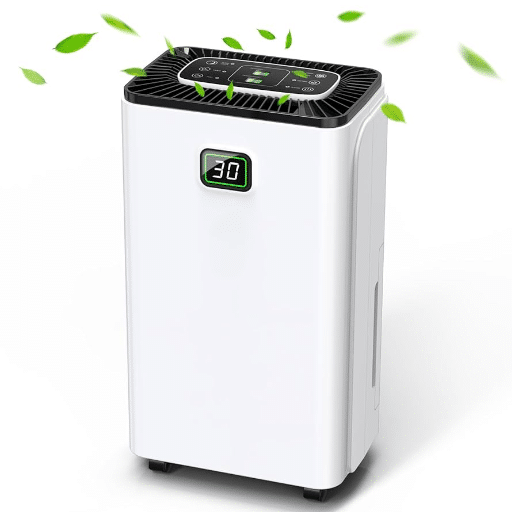
Dehumidifiers are machines that lower the amount of moisture in the air, thus making indoor places more pleasant and free from the problems like mold, mildew, and musty smells. The process involves sucking in the humid air, sending it through the cooling coils to change the moisture into water, and then the dry air is blown back into the room.
How a Dehumidifier Works
The dehumidifiers of today are not just capable of getting rid of moisture but also the air in the room is often purified as a result of this operation due to the installation of HEPA filters that trap allergens and dust. Numerous devices are now able to interface with smart home systems giving the homeowner the ability to keep an eye on and control the levels of humidity using their smartphones.
Common Parts of a Dehumidifier
| Component | Function |
|---|---|
| Compressor | The principal part that compresses and circulates the refrigerant, contributing to the cooling of the air and condensation of moisture. |
| Evaporator Coils | Wires that take away humidity from the air, turn it into water droplets and either collect it or let it flow away. |
| Condenser Coils | Heat the air after moisture removal by the evaporator coils before releasing it back into the room. |
| Fan | Pulls in humid air and moves it over the evaporator coils for proper dehumidification. |
| Water Collection Tank | Stores collected water or sends it out through a drainage pipe, depending on the machine type. |
| Humidity Sensor | Checks room humidity and changes settings accordingly for efficient operation. |
| Filters | Capture pollen, dust, and particles to make air cleaner and help reduce humidity. |
| Control Panel | Interface for users to set desired humidity, fan speed, timer, and other settings. |
Signs Your Dehumidifier is Running
Your dehumidifier’s effectiveness can be judged by several unambiguous signs:
- Audible Operation: You may hear fan or compressor noise during operation
- Visual Indicators: Indicator lights or digital display showing present humidity levels
- Humidity Reduction: Gradual but noticeable reduction of humidity in the room
- Water Collection: Water accumulating in the tank or draining through a hose
- Environmental Improvement: Reduction in musty smells and prevention of mold and mildew
Common Reasons a Dehumidifier Stops Working
A dehumidifier can stop working properly for various reasons. Here are the most common issues:
Blocked or Dirty Air Filter
One of the most common problems is a blocked or filthy air filter, which can reduce airflow and efficiency. Make it a point to clean or replace the filter frequently as part of regular maintenance.
Water Tank Issues
A water tank that is either full or not placed correctly can stop the dehumidifier from taking in moisture. Ensure the tank is emptied and positioned properly to allow the unit to run smoothly.
Mechanical Failures
Defective compressor or fan motor problems are critical issues that will result in the unit shutting down. These parts are essential for air extraction and circulation.
Sensor Malfunctions
A faulty humidity sensor might cause the unit to not read room conditions correctly, leading to premature shutdown.
Power Supply Problems
Insufficient power supply or broken wires might hinder operation. Always ensure the unit is plugged into a reliable power source.
Humidity Levels and Their Impact
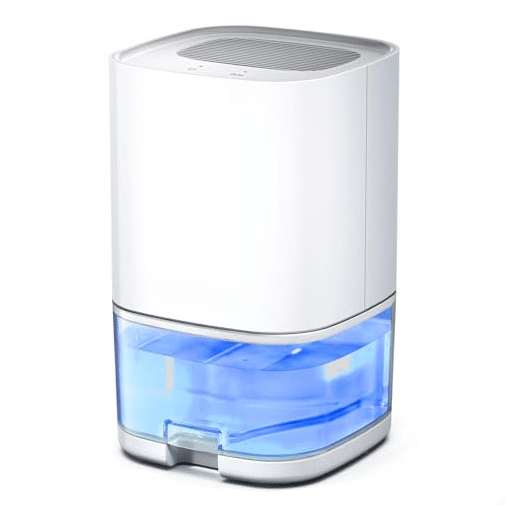
| Humidity Level | Effects |
|---|---|
| Above 50% | Provides environment for mold, mildew, and dust mites. Negatively affects air quality and may lead to allergies or respiratory problems. |
| 30-50% (Ideal) | Optimal comfort level. Prevents mold growth while maintaining comfort. |
| Below 30% | Can result in dry skin, irritated nasal passages, and cause wooden furniture or flooring to crack or warp. |
Power Supply Issues
Power-related problems can significantly impact your dehumidifier’s performance:
- Voltage Fluctuations: Can shorten appliance life and increase maintenance costs, primarily caused by overloaded power grids or unexpected power spikes
- Frequent Power Outages: Interrupts operation and may affect refrigeration components
- Overloaded Circuits: Too many appliances drawing power simultaneously can trip breakers or cause electrical fires
- Harmonic Distortions: Can cause malfunctioning of sensitive electronic devices
- Power Quality Issues: Spikes, sags, and electrical noise can cause electronic malfunctions or inefficient energy usage
Diagnosing Dehumidifier Issues
| Problem | Possible Causes | Solution |
|---|---|---|
| Not Powering On | Damaged power cord, non-functioning outlet, blown internal fuse | Verify power source, replace power cord if damaged, inspect and replace fuse if blown |
| Not Removing Moisture | Dirty air filters, low refrigerant levels, compressor problem | Clean or change air filter, inspect refrigerant levels, consult professional for compressor repair |
| Excessive Noise | Loose components, worn fan motor, internal dirt | Identify and tighten loose parts, lubricate or replace fan motor, clean internal components |
| Leaking Water | Clogged drain tube, incorrectly placed water tray, broken parts | Clear drain tube, position water tray correctly, replace broken parts |
| Coils Freezing Up | Very low room temperature, blocked airflow, dirty evaporator coil | Raise room temperature, ensure adequate airflow, clean or change evaporator coil |
Steps to Troubleshoot Your Dehumidifier
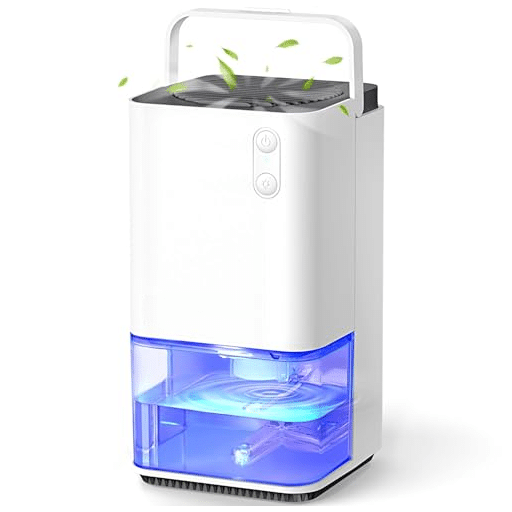
1. Check the Power Source
Make sure that the dehumidifier is plugged into a live outlet and that the outlet is active. Check if the outlet is working by connecting another device to it. If not working, try resetting your circuit breaker or calling an electrician.
2. Inspect the Humidistat Settings
Check the humidistat (humidity control setting) in your machine. If it is set too high, the dehumidifier will have problems functioning. Turn it down to a lower humidity level (usually 30-50%).
3. Examine the Air Filter
If the air filter is clogged it will interfere with airflow and performance. Take the filter out and clean it following the manufacturer’s instructions. If worn out, buy a new one.
4. Test for Error Codes
Most new dehumidifiers indicate certain problems with error codes. Consult your manual or do a web search for the specific code to get troubleshooting instructions.
5. Assess for Refrigerant Problems
If the unit is running but not removing moisture, it could indicate refrigerant leaking or insufficient refrigerant levels. A qualified technician should locate and fix such problems.
6. Inspect for Blockages
Check for internal blockages in the drainage system or fan mechanism. Remove any blockages to restore proper function.
When the Dehumidifier is Not Collecting Water
There are several reasons why your dehumidifier may not be collecting water:
Room Humidity Too Low
For a dehumidifier to work properly, the humidity level must be high enough. Many units will not collect water if ambient humidity is below the unit’s set threshold. Use a hygrometer to measure room humidity; dehumidifiers are most effective above 50% humidity.
Dirty or Clogged Air Filter
If airflow is obstructed, moisture drawn in may not be enough. This problem can often be solved by cleaning the filter or replacing it as directed by the manufacturer.
Room Temperature Too Low
The dehumidifier will be functional in temperatures of about 65°F (18°C) and above. In colder areas, water may not be collected due to frost formation on the coils. Consider getting a dehumidifier suitable for low-temperature applications.
Collection System Issues
Check whether the water collection bucket or drainage system is properly placed and not blocked. Certain models have a feature that automatically turns off the unit if the water tank is full or not positioned correctly.
Understanding Dehumidifier Settings
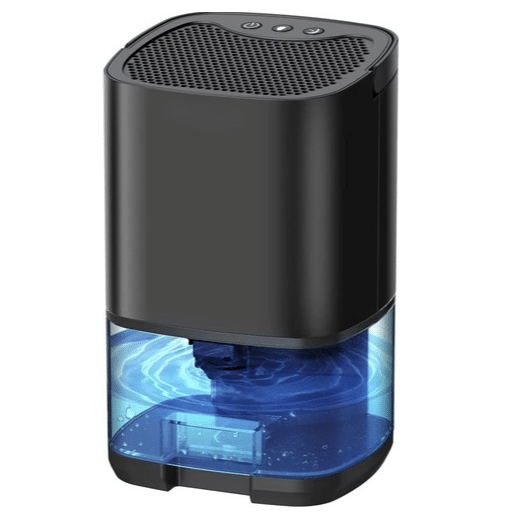
The most preferred indoor humidity is usually between 30% and 50%, but it often varies based on people’s preferences and seasonal shifts.
Room-Specific Settings
- Basements and High-Moisture Spots: Lower humidity level like 40% is recommended to avoid mold and mildew
- Living Zones: May be set at about 50% for comfort
- Auto Mode: Automatically changes settings per humidity levels in the room, saving energy
Advanced Features
- Timers for scheduled operation
- Fan-speed options for customized airflow
- Continuous drain settings for hassle-free operation
When to Buy a New Dehumidifier
Identifying Age and Wear
Dehumidifiers usually last on average from 5 to 10 years, depending on brand, usage, and service. If your unit is approaching or exceeding this period, its efficiency might have fallen significantly.
Replacement Indicators:
- Unit can no longer effectively remove moisture
- Frequent breakdowns occur
- Increased energy consumption
- Strange smells persist
- Visible signs of mold growth despite use
- Cracks in the water reservoir
Quality Dehumidifier Brands to Consider
| Brand | Key Features |
|---|---|
| Frigidaire | Durable and high-performing units with low energy consumption for both small and large spaces |
| hOmeLabs | Modern, quiet dehumidifiers with friendly features and excellent performance for home use |
| Midea | Affordable but powerful dehumidifiers with smart controls and super-efficient moisture elimination |
| Honeywell | Strong construction, efficient energy use, and safety features like thermal overload protection |
| GE Appliances | Reliable dehumidifiers with state-of-the-art features like continuous drainage and precise digital control |
Cost-Effectiveness of Repair vs. Replacement
Typical Repair Costs: $50 to $200, depending on problem severity and brand
When to Repair:
- Unit is relatively new (less than 5 years old)
- Repair costs are less than half the price of a new machine
- Problem is minor (small leaks, filter changes)
When to Replace:
- Unit is 8-10 years old or older
- Repair costs exceed half the price of a new unit
- Frequent breakdowns occur
- Energy efficiency has significantly decreased
- Newer models offer better features and energy savings
Helpful Troubleshooting Tips
Quick Checklist
- Check the Power Supply: Ensure proper connection and test the outlet with another appliance
- Clean the Air Filter: Remove, wash gently or vacuum, and let dry completely before reinstalling
- Inspect the Water Collection Bucket: Empty if full and replace securely
- Verify the Humidity Settings: Set between 30-50% for best indoor comfort
- Examine the Coils for Frost: Switch off and let defrost if frost is present
Regular Maintenance Practices
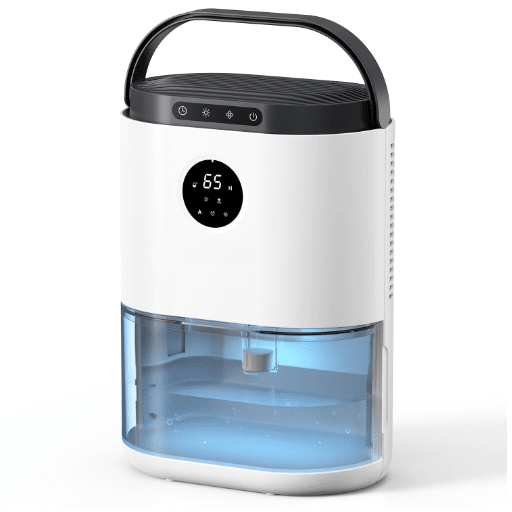
Monthly Tasks
- Change or clean air filters (every 1-3 months based on usage)
- Check water collection system for proper drainage
- Inspect for unusual noises or performance issues
Annual Tasks
- Clean condenser and evaporator coils
- Inspect refrigerant lines for leaks
- Schedule professional service check
- Review and adjust humidity settings for seasonal changes
Seasonal Adjustments for Optimal Performance
Summer Period:
- Clean or change air filters monthly
- Adjust settings for higher humidity levels
- Ensure proper ventilation around the unit
Cold Season:
- Monitor for frost formation on coils
- Adjust temperature settings to maintain efficiency
- Consider low-temperature models for colder spaces
Resources for Professional Help
When DIY troubleshooting isn’t enough, professional help is available:
- Licensed Technicians: Look for NATE (North American Technician Excellence) certified professionals
- Online Reviews: Check Google My Business, Yelp, and Angi for reliable contractors
- Manufacturer Support: Contact brand service centers for warranty work
- Maintenance Packages: Compare prices and ask about ongoing maintenance plans
Additional Resources:
- Hisense Dehumidifier Manual: Troubleshooting steps for common issues
- City of Normal, Illinois: Updates on dehumidifier recalls and safety resources
References
-
Hisense Dehumidifier Manual: Includes troubleshooting steps for common issues like not collecting water, checking the water level indicator, and verifying humidity settings. View the manual.
-
City of Normal, Illinois: Shares updates on dehumidifier recalls and resources to check if a unit is affected, which could impact its functionality. Learn more.
Frequently Asked Questions (FAQ)
What to do if the dehumidifier does not work?
Make sure to inspect the water level switch first if your dehumidifier is not working in continuous mode. The unit will remain idle until the water tank is emptied if it is full. Cross-check that the drainage hose is not only linked properly but also does not have any bends that may impede the movement of water.
What does it mean if the dehumidifier is not working after being switched on?
Non-functioning dehumidifiers that have just been switched on could be an indication of defective electrical parts or a malfunctioning control board. A multimeter can be used to measure the continuity in the power supply. Besides, if the unit is giving out strange noises, it might be a mechanical breakdown.
What should I do to find out what’s wrong with my dehumidifier if it has stopped working?
In case your dehumidifier has stopped working, firstly unplug it and check the air intake for lint or dirt that may be affecting the airflow. Reset the humidistat to a suit climate; if the appliance still does not restart, monitor the compressor and fan functionality.
What if the new dehumidifier is not working?
In the event that the new humidifier is not working, check that it has been plugged in properly and that the electrical outlet is working. Refer to the product manual for potential setup steps that might have been missed. If it is still non-working, check for leaking or damaging signs and then decide if filing a warranty claim is a good option.
Why is my dehumidifier releasing water instead of dehumidifying?
Suppose your dehumidifier is producing a drop of water instead of effectively dehumidifying. In that case, it may indicate that the humidity level is set too high or that the unit is undersized for your space. Ensure the humidistat is set correctly and that the unit is capable of handling the moisture from the air in your area.
What are common causes of dehumidifier breakage?
Full tank, faulty compressor, or blocked air intake are some of the main causes that lead to a mechanical failure that stops the dehumidifier from operating. It is vital to do regular maintenance such as filter cleaning and ensuring daily airflow to prolong the lifespan of your appliances.
How can I find out if the fan in my dehumidifier is working?
One way to find out if the fan in your dehumidifier is working is to listen to the other sounds coming out when the unit is on; if you cannot hear the fan, you might need to let the unit open to check the terminal connections, or you might like to inspect the fan motor instead.
Should I get a new dehumidifier if my old one isn’t w orking?
If the troubleshooting process does not yield any positive results for your dehumidifier, then it would be a good idea to compare the repair costs with the cost of buying a quality new dehumidifier. Old units with a history of problems tend to be less efficient and reliable, thus it is better to invest in a new unit.

